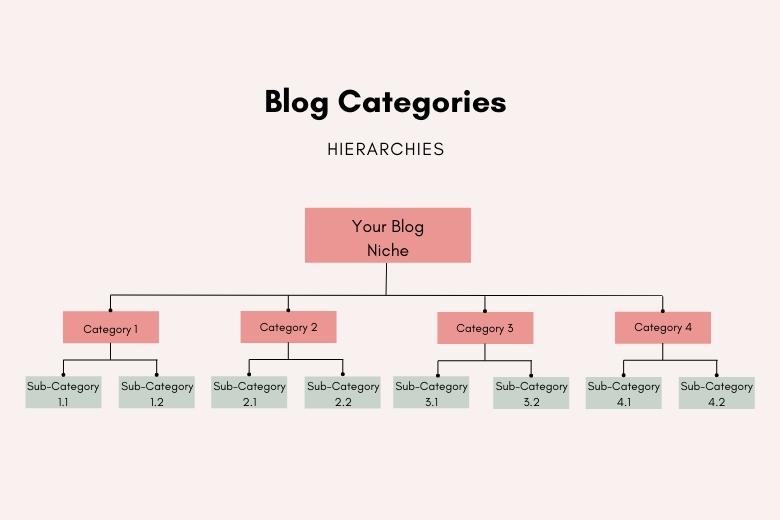What Is a Blog Category and Why Are They Important for Your Blog?
The blog categories on your website help readers find the information they’re looking for. They are high-level topics that make it simple for visitors to grasp the subject matter of your blog and find the information that they are interested in. Comparable to a table of contents, Your website’s categories give it structure by grouping individual posts and subtopics under a few major headings.
Consider the scenario where you manage a food blog. You write appliance reviews, share photography advice, and develop recipes. Your blog’s categories are these main topics (recipes, reviews, and photography). But there are several subtopics that fall under each main topic, such as tutorials for low light and stop-motion photography, reviews of small appliances and tools, and bread and pastry recipes.
If I’m looking for dinner ideas on your website, I should be able to view all of the delectable options you have quickly by selecting the recipes category.
Whatever type of blog you run, the articles you write must fit into one of your selected categories.

Why Blog Categories Are Important
Each blog post requires hours of work, and you don’t want it to vanish into the abyss of your archives. Without clearly defined blog categories, your content quickly fades from view and must be scrolled endlessly to be discovered. One advantage of categories is that they can prevent this from happening.
1. Blog categories provide simple site navigation.
A visually appealing site is incredibly important for visitors. 90% of people have left a website due to poor design. Blog categories group content under a handful of topics, so people get to where they want to be, fast. Some website themes limit the number of categories you can create, so make sure to consider that before grouping your content.
2. Blog categories improve site SEO.
Categories give you a leg up in the blog SEO game by adding hierarchy to your pages. This helps search engines better understand what each page is about and rank accordingly.
If you create a category page, for instance, and continue adding and linking posts that are relevant to that category, it will become increasingly optimized. Search engines will recognize this and bump up the ranking, which makes it easier for people to find your site.
3. Blog categories make blog content strategy easier.
Planning an editorial calendar is no easy feat. But with well-defined blog categories, you have a guide for what to write about. Your strategy can touch on each category to avoid stacking one with all the content. This rounds out your blog and prevents you from falling into single-category chaos.
If that’s not enough to sway you, know that 65% of the most successful North American bloggers have a well-documented content marketing strategy. Among the least successful bloggers, 39% admit they don’t have any strategy and 14% actually write down a strategy.
